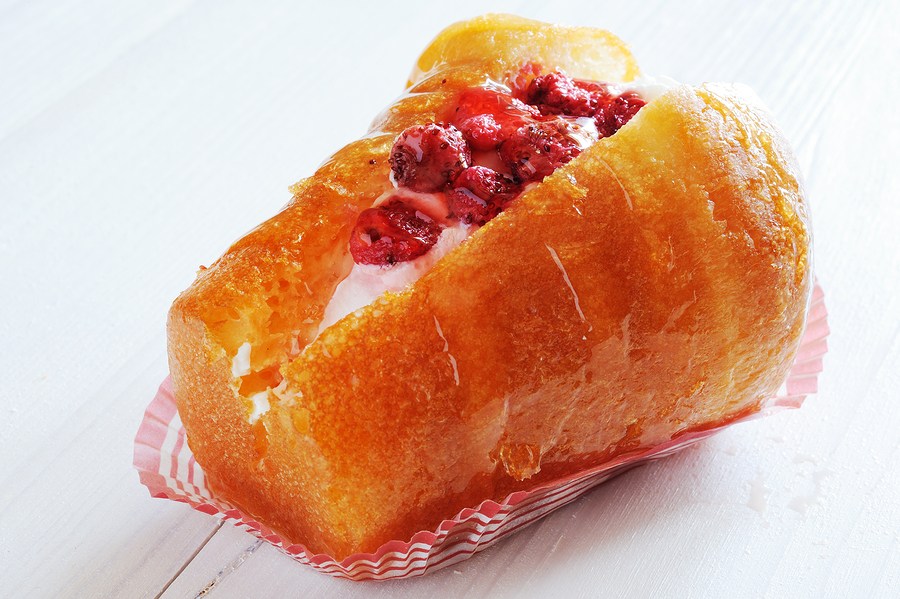

Steps to Follow: Place a rack in middle of oven; preheat to 450°. Time to prep your veg! You are going to make a mirepoix, which is just a fancy French word for the combo of chopped onions, carrots, and celery that form the flavor base for a lot of European dishes. First, cut 1 large onion in half through root. Peel and discard skins. Finely chop and transfer to a medium bowl. Wash, peel, and trim 3 medium carrots. Cut in half (or in quarters lengthwise if they’re large), then cut crosswise into ½" pieces. (You can also just chop the carrots down into coins if you don't mind larger pieces of veg in your soup.) Add to bowl with onion. Chop 2 celery stalks crosswise into ½" pieces. Add to bowl with the rest of the mirepoix. Smash and peel 8 garlic cloves with the back of your knife. If any of them are left more or less intact after that initial smashing, give them another good wack with the back of your knife so they really open up and start to break apart. Add to bowl, also. Strip stems from 2 bunches Tuscan kale and discard. Wash if they're gritty or you really care about washing vegetables, then tear leaves into 2" pieces; set aside. Cut rind off of 1 small Parmesan wedge; set aside. Place 28 oz. canned tomatoes and their juices in a strainer set inside a medium bowl. (You need that bowl to collect the juice, which you're going to use later—don't throw it out!) Squeeze tomatoes and crush them with your hands while leaving them submerged in their liquid so they don’t squirt. Tear ½ loaf crusty country bread into 1½" pieces. Heat ⅓ cup extra-virgin oil in a medium Dutch oven or heavy pot over medium. Add bowl of mirepoix and 2 tsp. salt and cook, stirring occasionally, until vegetables are softened but not browned, 8–10 minutes. Lift strainer full of tomatoes and give it a few shakes to remove any liquid. Add tomatoes (but not juices!) and cook, stirring occasionally, until some of the rawness is cooked off, about 10 minutes. Giving those tomato solids a chance to caramelize before adding the liquid back in helps to add a lot of flavor to the stew. (Remember: Reserve the juices, you’re going to use them!) While tomatoes are cooking, drain and rinse 14 oz. canned cannellini beans in the strainer you just used, then add to pot along with Parmesan rind, tomato juices, ¾ tsp. red pepper flakes, and 4 cups water. Bring to a simmer. Add kale in two additions, stirring often and allowing to wilt in between. Add about one-third of torn bread (no need to measure, just eyeball it) and cook, stirring occasionally, until coated and warmed through, about 5 minutes more. Taste and adjust seasoning. Remove from heat. Place remaining torn bread chunks on top of stew. Drizzle generously with olive oil. Transfer pot to oven and bake stew until thick, bubbling, and bread is golden brown on top, 10–15 minutes. Ladle stew into bowls, drizzle each generously with olive oil, and grate lots of Parmesan over.

Steps to Follow: Combine the yeast, milk and 30g of flour until you have a smooth ball of dough. Set in a bowl wrapped with cling film and leave to rise in a warm place for about 30 minutes, or until doubled in size. Place the remaining flour in a stand mixer with the paddle attachment. Add the yeast mixture and run on a medium-low speed. Add the sugar and eggs and let the mixer run for about 20 minutes, until the dough becomes elastic and starts to come away from the side of the bowl. Switch to the dough hook attachment. Turn the mixer back on and add the salt. Add the butter, one cube at a time, ensuring each cube is fully incorporated before adding the next one. After you add all the butter, keep working the dough for 10 more minutes, until the dough looks soft and is a pale yellow. Turn off the mixer, remove the bowl and wrap it in cling film. Leave the dough to rise in a warm place for 3 hours.While the dough rises, make the syrup. Place the water in a pot and add the lemon zest, orange zest and sugar. Place the over a medium heat and bring to a simmer. Once the sugar has dissolved, remove the pan from the heat, allow it to cool slightly, then add the rum. Reserve to one side. Grease and flour the moulds. Preaheat the oven to 180°C/gas mark 4. Knock back the dough. Take small portions, approximately 70g each, and place a ball into each mould. Leave them to rise in a warm place, until the dough grows into the mould and forms a dome on top. Place in the oven and bake for 30–35 minutes, until deeply golden brown. Remove and allow to cool in their moulds for about 10 minutes. Turn the cakes out of the moulds and place them on a rack to cool. To soak, heat the syrup until just warm. Remove from the heat and use a pair of tongs to dip each babà into the syrup, turning so they are thoroughly soaked on all sides. Gently squeeze out any excess syrup. Transfer the soaked babà to a cooling rack set over a baking sheet, turning occasionally so they soak evenly. To finish, brush the babà with apricot jam.